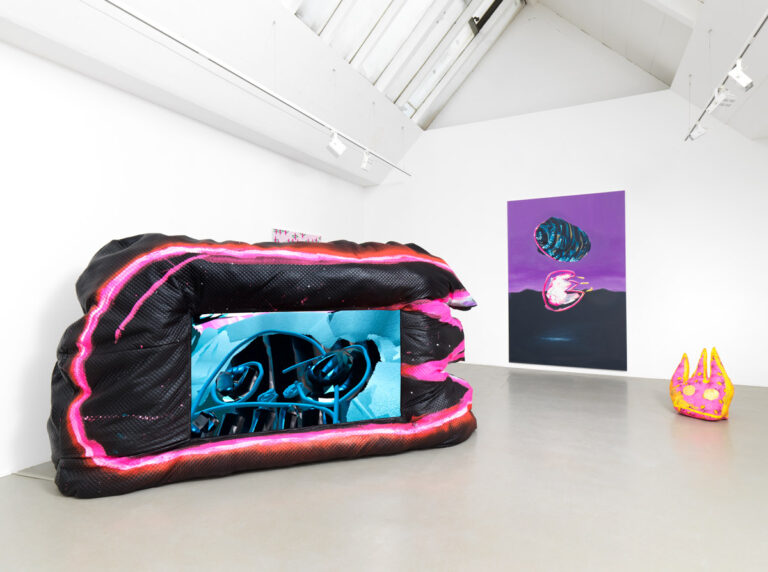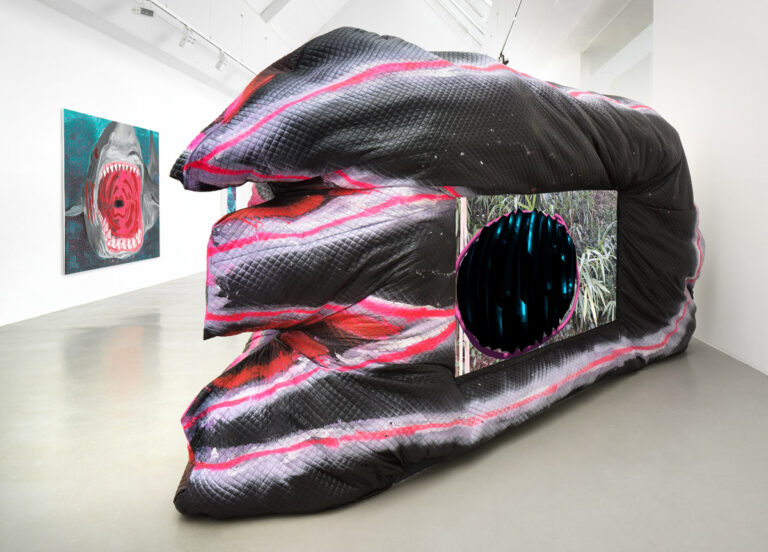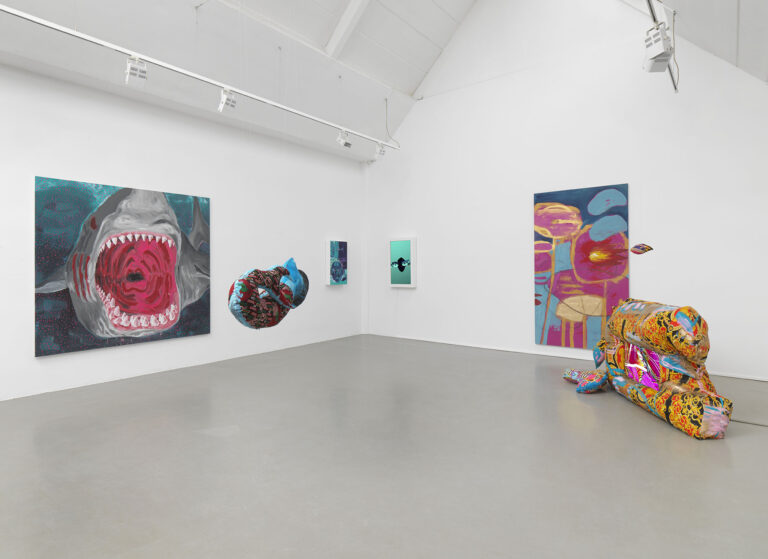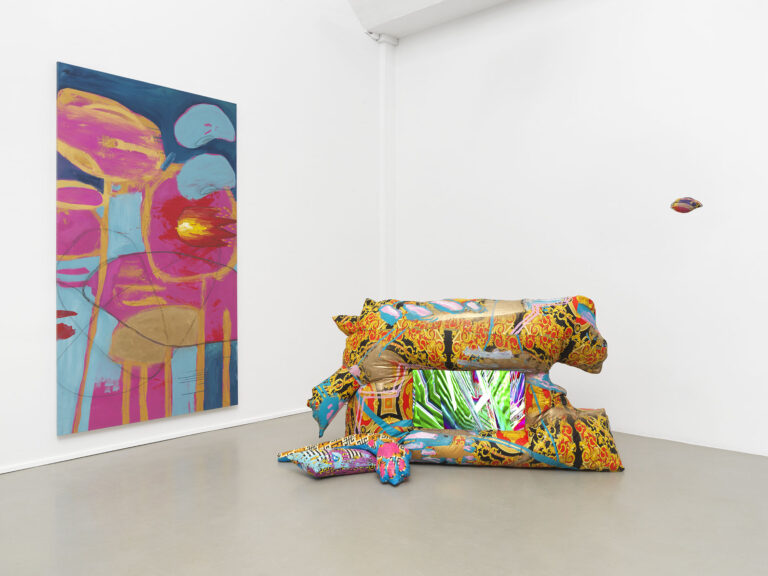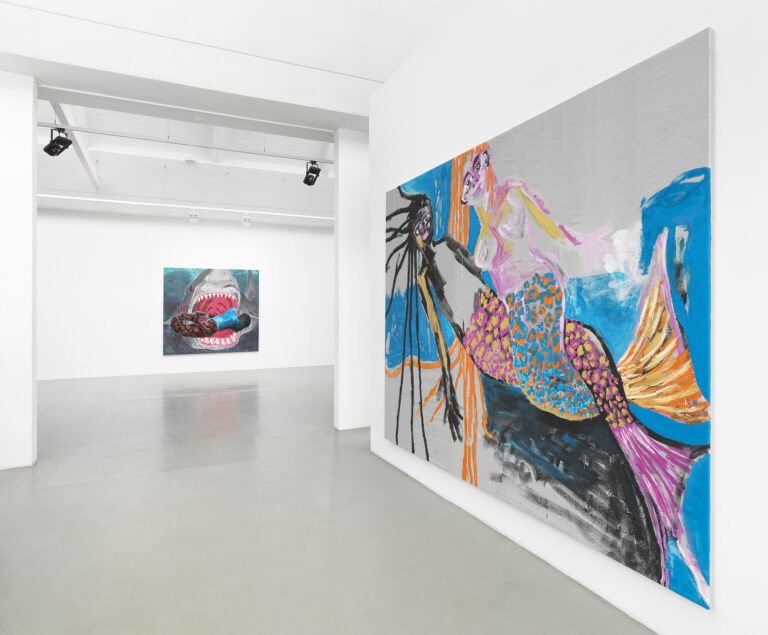Mukenge/Schellhammer
Forward flight – Flucht nach vorn
02 MAR until 20 APR 2024
Published 12 MAR 2024
Forward flight – Flucht nach vorn – is a German idiom that denotes a moment of danger or impossible retreat in which the only solution is to throw oneself headfirst into the threatening situation. With one’s back against the wall, the only way out is to flee forward.
„Forward Flight“ is the third part of a series of works on contemporary mythologies. After the first chapter „Barking dogs in the head“ (Kinshasa, 2022) and the second chapter „Undigested Images“ (Berlin and Stuttgart, 2023), the third part tells the mythical genesis of that strange creature Mukenge/Schellhammer itself. Forward Flight is a classic monomyth, a hero‘s journey. As in most stories, the Duo goes through cyclical phases of separation, initiation, and return during their journeys between Kinshasa and Germany. In a multimedia exhibition, Mukenge/ Schellhammer tells of encounters with demons and helpers, of battles and treasures, of their own transformation.
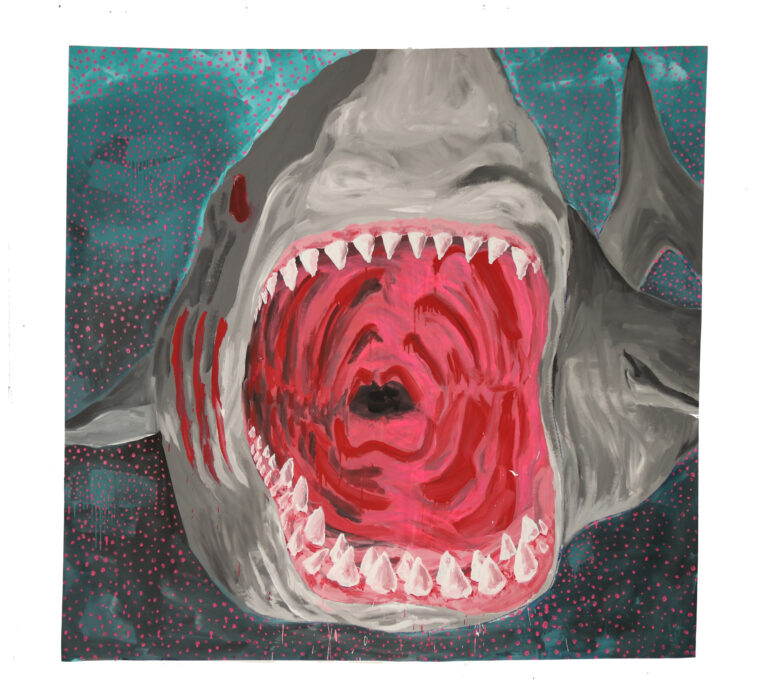
Mukenge/Schellhammer’s art is not a political statement, but is constantly beset, appropriated, counteracted by the political. In order to escape stereotypical attributions, prejudices and classifications, they have developed a specific form of collaboration, working together on the same canvas, video, or digital painting. They co-sign all works, blurring classifications of authorship, artistic tradition, or geography. Over the past seven years, a third style has developed in-between the two artists‘ methods, modes of expression , and visual habits: the imagery of the „Duo“. The Duo has become an independent being with its own formal specificities and aesthetics, a double-headed monster, shaped and deformed by the pressure of the conditions of our present.
The duo responds to the expectations placed on it less with political counterproposals than with formal artistic means. The specific working process and the real conditions under which the duo produces correspond to a formal approach that is characterized by constant translation processes. Motifs are borrowed from local realities and repeatedly translated, deformed and reformatted in a gradual working process that links real, simulated, and fictional elements. Material fragments, digital drawings and paintings and digitized images proliferate in virtual space. They become highly mobile three-dimensional digital objects, which are fed back into analogue space where they once again fundamentally change under different conditions of representation. Textures from analogue painting such as color gradients, structure and brushstrokes are simulated in the realm of the digital, only to reappear in analog objects and paintings, enriched by special effects such as glitter, movement or animation. Uncanny mimetic effects and glitchy aesthetic lapses emerges from the precarious communication between the two spheres.
Text: Marian Kaiser in conversation with Mukenge/Schellhammer

